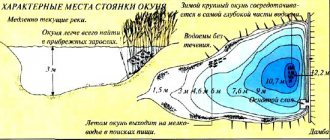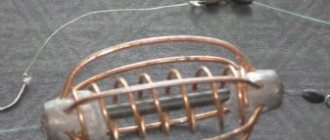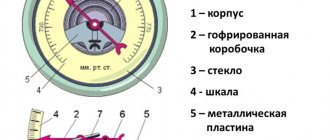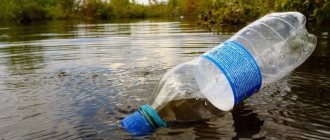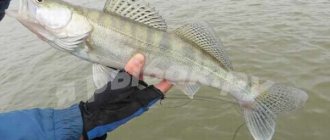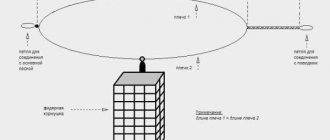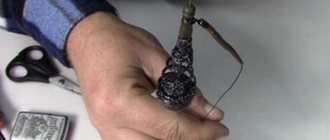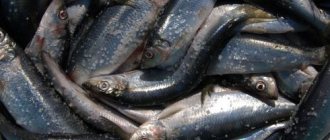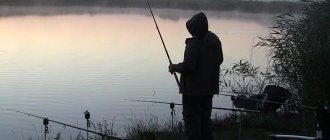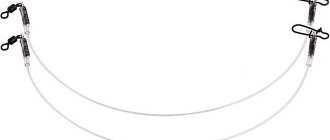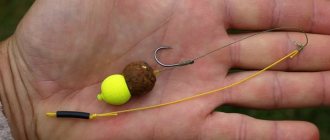What is a pacifier?
The nipple is a bottom tackle. It is suitable for catching large specimens and is a direct competitor to the feeder. The essence of the work of this gear is to fill a special feeder with complementary foods and the presence of several hooks fixed on leashes. You can make a pacifier yourself or purchase a ready-made model in a specialized store.
Types of nipples
The most popular among fishermen are two types of nipples:
- Spring type. This option is a regular spring of various sizes. The method of attaching a nipple to a fishing line with a spring has two variations. Blind fastening is tying the main fishing line and leads directly to the spring. To ensure sliding of a spring-type teat, a small tube is attached along the central axis of the feeder. On the working line, the spring stroke is stabilized with the help of beads or rubber stoppers. To make a spring, it is preferable to use wire made of non-ferrous metal. This will simplify the work process and avoid rust on the spring.
- Pacifier plug. A popular option for cork is to make it from a bottle cap. Making such a system will require some modification to the plastic bottle cap. The bottom should be weighted with lead filler, which will ensure uniform lowering of the equipment and prevent it from moving downstream. You should also drill several holes on the sides of the plug to fix the main fishing line and leads. The popularity of cork nipples is due to the features of the shape, which is optimally suitable for filling with complementary foods.
Tackle design
Today, the two most popular types of pacifier design are:
- spring,
- cork.
Features of spring design:
- The basis of the tackle is a spring with two leashes on which hooks with balls are attached.
- The dough is tightly packed into the spring, the hooks are located inside on four sides.
Cork nipple:
- The cap of a plastic bottle is weighted with fused lead.
- We place leashes with hooks on the winding rings. Please note that the heavier the catch you plan on, the closer the leads should be to the lid.
- We place a swivel for the main fastening in a separate hole; the hooks are equipped with balls.
The hooks must be equipped with multi-colored foam balls to attract the attention of the carp.
Instead of a bottle cap, a design is very often used, which is based on the base of a spoon, the handle of which has been previously removed, and the sharp and cutting edges are processed with a needle file.
The main advantage of using a spoon is that the separate placement of leads with hooks does not contribute to tangling, and the shape is well streamlined and does not resist when casting.
Do not forget also that ready-made nipples can be purchased at any specialized store.
Correct rigging
For a good catch, it is very important to properly equip the feeder.
To do this, you just need to follow the simplest tips:
- 2-3 hooks should be placed at a short distance
- Hooks must be equipped with baits or pieces of bait
- Regardless of what bait mixture you plan to use, it should also contain pieces of bait.
- Braided fishing line is best suited for leashes. Thanks to its softness, shy fish will be less likely to be wary
- Hooks should be placed in the bait not after full filling, but during the filling process.
- It is recommended to use hooks No. 6-8. Being the sharpest and having a good margin of safety, they are best suited for this tackle.
- Pay great attention to the viscosity of complementary foods. The higher it is, the longer it will take to wash out.
The essence of the nipple fishing method
As a rule, carp, crucian carp and representatives of these species are caught using the nipple. It is also quite possible to catch rudd, carp, grass carp, and roach.
The essence of fishing using a nipple is to choose the right place and secure the bait well. Its manufacture and fixation require knowledge of certain tricks.
For example, the bait should be soaked until it reaches the consistency of a viscous dough. This will allow the food to be securely secured in the body of the plug. First, you need to select a place for fishing, install stands and alarms. After filling the nipple with complementary foods, throw the bait into the pond and wait for a bite.
Additional equipment of hooks with foam balls or worms in combination with aromatic bait will attract fish. Fishing using the gear in question can take place both on a lake, an artificial reservoir, and on rivers. But, in the latter case, the speed of the current should be taken into account, which may require additional weighting of the gear.
Fishing process
The designed nipple structure, filled with aromatic bait, must be attached to the main flood and thrown into a place chosen and prepared for catching bream. The fact that your bait “has pleased the bream” can be signaled by a guard or a bell - this is what you are used to, so equip your gear with such a signal. As soon as the signal appears, you need to prepare the landing net - the bream with bait has already sucked in the hooks, so it’s time to get it out of the water.
Today, specialized stores sell modern fishing rods - feeders, but they cost money. Or you can not be lazy and make a replacement for the feeder with your own hands - a pacifier. This design provides a similar principle of operation and allows you to catch bream no worse than modern fishing rods. It is only important to correctly design the nipple for the bream, immerse it correctly in the right place, and fishing success is guaranteed.
Gear selection
The success of fishing using a nipple depends on the correct equipment. To ensure that the fish swallows the hooks and hooks itself, special attention should be paid to the correct installation of equipment, selection of hooks, rods and leashes.
The best option would be to use the following arsenal:
- Use sharp and strong hooks . As we know from experience, numbers 6-8 are optimal.
- For leashes it is necessary to use braided fishing line . An important role is played by its softness when pulling the leash, which will not additionally scare away the fish when it comes into contact with the fishing line. Leashes are made 4-5 cm long.
- The fishing rod is usually a standard donka with a medium rod and a traditional reel or spinning rod with a rotating head.
It is worth paying attention that the braided line should be weaker than the main line. In this case, with a dead hook, only the hook will be lost, and all the equipment will remain on the working line. To prevent the line from twisting and speed up the assembly of the equipment, it is advisable to use a swivel with a carabiner when installing the nipple on the working line.
Places for catching bream on a nipple
Even novice fishermen know how important it is to choose the right place for fishing. The choice of such a place should be treated especially carefully if you plan to catch bream.
Many people know that bream love deep-sea secluded places, so you should choose calmer areas on the river for fishing. Give preference to those parts of the river where it forms a pocket or semi-bay. In such places, as a rule, there is a decent depth and a calmer flow, all this leads to the water stagnating, becoming more cloudy and the bottom silting over time, becoming viscous. It is in such places that bream like to burrow.
Read more:
Catching sterlet
It is also worth looking for the deepest places on the river. Many fishermen are confident that to catch bream it is enough to find holes with a depth of up to 6-7 meters. In fact, deeper holes are preferable - up to 12-20 meters. In such places, the bream will certainly go to its secluded places, so a bite here is guaranteed in the morning and evening.
If, for catching bream on a nipple, you choose a not too deep-water pocket on the river, then you can additionally “equip” a small bay with your own hands: near the fallen tree you need to clear the very silty bottom and start baiting the bream.
Note to the fisherman! Despite the apparent simplicity of the design of the pacifier, it is not always possible to equip it correctly - everything comes with practice. Each angler improves his equipment, complementing it with other elements. So, you can even use a stronger braided fishing line as a bait for bream. When bent, such a fishing line is very soft and elastic, so when it comes into contact with bream, it will not alarm it too much. To prevent the main line from twisting, you can install a swivel with a carabiner.
Groundbait and bait for nipple fishing
Bait for the tackle in question can be purchased at a specialized store. There are also several homemade recipes that are in no way inferior in quality to store-bought food.
Recipe No. 1
Preparation of complementary foods from millet cereals is carried out as follows:
- Pour 3 cups of water into a small saucepan and add 2 cups of millet.
- The first pan is placed in a large container of water to create a water bath effect.
- The water should be boiling in a large container, and the small pan should be closed.
- The cereal is considered ready when it becomes swollen and kneads easily in the hands. Cooking in a water bath prevents the porridge from burning.
- Using available means, the finished porridge is brought to a dough-like consistency.
- Half a glass of semolina and 100 grams of ground cake are added to complementary foods.
Recipe No. 2
The filling for complementary feeding from potatoes and bread has the following recipe:
- Brown bread and potatoes are ground in equal proportions through a meat grinder.
- Add bait for crucian carp or other flavor enhancers.
- The prepared mixture is kneaded well, bringing it to a dough state.
Recipe No. 3
semolina bait looks like this:
- An equal ratio of semolina and water is taken.
- After the water boils, pour the semolina into the pan and cook the mixture with constant stirring.
- Once the porridge becomes completely homogeneous, it is removed from the heat and stirred until the entire mixture is completely moistened.
- The porridge is wrapped and infused for 20-30 minutes.
- Then the mass is kneaded to a plasticine state and divided into several parts.
- A flavor enhancer is added to each serving.
You can use dill, garlic, vanilla, cinnamon, and anise as flavorings.
It is better to store the finished bait in an airtight cellophane package in the refrigerator or prepare it immediately before fishing. The remaining mixture can be used to attract fish to your chosen place by pouring it into the water.
To further attract potential catch, you can attach foam balls or worms to the hooks.
Bait for nipples fishing for mastyrka
The effectiveness of nipple fishing depends on the quality of bait and its composition. The whole principle of this bottom tackle is based on the fact that the fish comes to the feeder and sucks on it, and the hooks with the nozzle provoke it. There are several popular recipes, let's look at three of them.
Pea and semolina porridge
Peas for nipple fishing are used not only as bait, but also as bait. This recipe has a second name - mastyrka, and it is not difficult to prepare.
- the peas are thoroughly washed and poured into the pan; to speed up cooking, it is advisable to soak them in water for 4-5 hours before doing this;
- You need to pour three parts of water into the pan and cook until the peas are boiled to a pulp;
- the resulting porridge is mixed with semolina to a viscous, dough-like consistency.
Directly on the shore, you can add semolina to the porridge to increase the viscosity, or dilute it with water from the pond if the bait is too thick. This is one of the most effective recipes, especially considering that porridge can not only be placed in a feeder, but also used as a bait.
Millet porridge
It just so happens that some fishermen prefer peas for fishing, others pearl barley, and still others prefer millet. But how to prepare such porridge so that it is able to keep fish near it for a long time? The technology is simple; you need to take eight liters of water per kilogram of millet. The cereal is poured into the pan after boiling water and cooked for fifteen minutes.
The product is considered cooked if the millet begins to open. The fire turns off immediately. A glass of sunflower seeds is twisted in a meat grinder and mixed with porridge. You can also add flavorings.
Wheat-corn porridge
The question of how to catch fish on a nipple will immediately disappear if you use another fairly common recipe. Any peaceful fish is very favorable towards hominy, or corn porridge. To increase its plasticity, corn flour is mixed with wheat flour.
- Having mixed two flours, the resulting composition must be fried in a frying pan until it has a pleasant aroma;
- then knead the dough in water until it becomes creamy thick;
- Place the dough in a sealed bag and cook for 30-40 minutes over medium heat.
Store the porridge in the same bag. The resulting porridge can also be used as a bait. For an attractive smell, honey, vanillin or fruit extract are added to hominy.
Techniques and tactics of fishing with a nipple: tips and tricks
The process of fishing with a nipple consists of following the following steps:
- Choosing promising location , in a depression, in an area with coastal vegetation or on a small hill.
- Arranging rod stands , unpacking landing nets, alarms and other equipment.
- Fill the feeder with food tightly enough to prevent it from being quickly washed out.
- The hooks are fixed inside the food with the point down and the curved part up.
- After casting the tackle, you should adjust the line tension and install a signaling device.
- You can throw the tackle in question in places with dense vegetation without fear of an accidental snag, since there are no open hooks on the fishing line.
- Then all you have to do is wait for a bite.
Some tips that will be useful for novice anglers:
- The bait in the nipple should be of such a consistency that it is firmly held in the feeder and is accessible to the fish for sucking.
- When catching crucian carp, you should be patient. This fish is very careful and sniffs the food for a long time.
- Some fishing experts believe that bottom fishing with a nipple at night is more effective.
- Feeding from bread and boiled potatoes is well fixed in the feeder and is an ideal complementary food for carp and crucian carp. The fish sucks on the treat, swallows the hook, and tries to swim away, getting hooked more and more.
A simple design, combined with the possibility of good fishing, are the main reasons for this feeder among the fishing fraternity.
When and where to catch bream
To catch this fish, you need to go hunting shortly before sunset or very early in the morning. According to old bream fishermen, especially large specimens are hooked at night. You can also be lucky during the day, but only if there is a slight breeze blowing on the pond, causing a wave.
As with any fishing, they start by searching for a catchable area. The larger the bream, the further from the coastline it tries to stay, so sometimes the use of a watercraft is justified. Bream often prefer to migrate along the fairway. This is where you can meet the largest number of fishermen.
If fishing is carried out on a nipple, which we wrote about in the article “How catchy a nipple can be on carp,” then in this case, when feeding the area, it is important to remember that it is only necessary to increase the appetite of the fish. In fact, you need to feed the bream little by little, otherwise the bream that is full will stop biting.
You can catch this fish as early as April, when the reservoir is cleared of its ice shell. The most active bite can be observed from the moment when the bream loses its torpor and begins to migrate across the reservoir in search of food. At this time, it can often be found near the shore. This continues until spawning.
In summer, catching bream becomes much more difficult, sometimes even impossible. In this case, you have to wait until the algae gain strength and become coarser. Only then does the bite resume and continue until November, until the temperature of the reservoir drops significantly.
Experienced breamers spend quite a lot of time studying the reservoir, sometimes drawing up a detailed map of the bottom topography. Moreover, they keep a detailed record of where the bream prefers what kind of bait, what weather conditions are good for the bite, and how many fish were caught in a particular area.
There are several rules that will help you catch bream:
- You should never bait bream when fishing with a nipple if the areas are heavily overgrown with aquatic vegetation.
- You should not look for fish where there is a soft muddy bottom.
- Bream prefers areas of the reservoir where there is practically no vegetation, the bottom is hard and clean - sandy or even clayey.
During the day you should fish deep-water zones - exits from various holes, differences in depth. With the onset of dusk, the bream moves to the shore. By the way, it has been noticed that he likes to move along special underwater grooves.
Sports version of the pacifier
This gear option is not very suitable for sport fishing. However, by applying some changes to the nipple, this type of fishing can be organized.
To do this you will need to perform the following manipulations:
- Reduce the weight of the feeder , which will reduce the effectiveness of independent hooking and you will have to switch all your attention to the tip of the rod.
- Use bait instead of foam . To do this, you can take special food, which swells at the bottom in the water and forms a kind of slide, on the top of which a boilie is attached.
Disadvantages of pacifiers
The main disadvantage of the nipple is its low sensitivity to bites. If small fish predominate in a reservoir, then they can suck on food with impunity without getting hooked. In this case, the angler may not detect any signs of a bite at the tip of the rod.
Due to the large number of leads and hooks, the equipment will often get tangled. For this reason, anglers prefer to use short, thick and strong leaders.
A fishing jig is a heavy piece of equipment that is difficult to cast over a long distance. When fishing in strong currents, you have to use heavy springs or plugs with a large amount of food. For making a fishing nipple, a simple hard spinning rod or a feeder with a long and powerful blank is most suitable.
Technology for manufacturing cork pacifiers
One way to make a cork pacifier looks like this:
- Holes are drilled or pierced on four sides of the bottle cap.
- Leashes made of braided fishing line are attached to three holes.
- The fourth hole is intended for attaching the swivel by soldering or fixing with a clasp.
- The sinker is attached to the bottom of the lid using wire. The weighting material is made of lead.
- Each hook is equipped with a small foam ball.
The feeder in the form of a plug nipple is ready.
What is a pacifier
As we have already said, this tackle has a bottom design. Moreover, its basis is a special feeder with several short leashes. Usually their length does not exceed 5-8 cm. As for the hooks, they are always hidden inside viscous bait, similar in consistency to plasticine.
There are many modifications to nipples for carp. Most Popular:
- cork;
- spring.
They differ both in the feeder itself and in the installation of equipment. As a rule, the first version of the tackle is made from corks from large plastic bottles or other containers. The feeders for this modification of the nipple are fixed motionless. They hold the bait well and prevent it from being washed out quickly. Another type of pacifier is a sliding mount with a spring feeder. It is also stuffed with thick complementary food, inside of which hooks are hidden. The main difference is that the feeder has free movement along a piece of fishing line 20-30 cm long.
Option for mounting a pacifier-spring
Some fishermen consider the nipple a poaching tackle. Therefore, it is not used in sport fishing.
However, the nipple is popular among amateur carp fishers. The whole point is that:
- you can make it yourself;
- No expensive components are required for installation of this equipment;
- you can use a variety of attachments with it;
- the hooks are hidden inside the baited feeder, which virtually eliminates the risk of snagging;
- baits and bait are located as close to each other as possible, thereby increasing the number of bites;
- You can use up to 5-7 hooks at the same time, which again increases the chances of catching fish.
The nipple has a number of advantages over other gear
Making pacifiers from other available materials
Alternatively, instead of a lid or cork, to make the tackle in question, you can use an ordinary spoon with a broken or sawn-off handle .
Preferably, the material from which the product is made should be cupronickel or stainless steel. Thanks to the unique shape of the spoon, the possibility of snagging is minimized, and the aerodynamic properties of the nipple during casting are also increased, without the need for additional weighting.
The leashes for the presented tackle are attached to holes made in the spoon at a distance of 4 mm from its edge. To prevent damage to the fishing line, the sharp edges of the product should be pre-treated and cleaned.
The clamp for the main fishing line is attached to the remainder of the spoon handle. To improve the retention of complementary foods, pieces of wire should be passed through the holes on the inside, and small loops should be formed on the reverse side.
Unlike a cork, this tackle falls to the bottom in different positions and is reminiscent of fishing with a feeder with a spring-type feeder.
How to catch carp on a nipple and what kind of gear to use
Unlike the crucian carp tackle, which we described in the article “Working nipple for crucian carp”, for catching carp the elements of the equipment are selected more carefully; when catching this cautious fish, they should not fail at the most inopportune moment.
- The rod you choose is quite powerful, 210-360 cm long. Any type is suitable - both plug-in and telescopic. In terms of quality, you don’t have to pay attention; cheap Chinese spinning rods work fine for this type of fishing. The only condition is that the test is at least forty grams, based on the loaded feeder.
- For carp fishing, it is preferable to mount a spinning reel with a baitrunner, which is capable of ensuring free line movement when biting. It is wound on a spool about a hundred meters.
- If preference is given to monofilament line, then its cross-section should be two to three millimeters; a thinner braid will do. In addition, she is more sensitive.
- If you make a teat for carp yourself, then its weight should be larger than that of carp and be 60-80 g.
- The length of the leashes in this case can reach half a meter.
- Hooks depend on the size of the carp found in the pond and the bait. The numbers range from 5 to 8.
- A small bell is suitable for a bite indicator.
Supporters of feeder fishing treat smoktukhs with great suspicion and distrust. They motivate their position by the fact that in the feeder the equipment is separated, that is, the feeder, hook, leash are separate, and at the same time it is more interesting to catch fish for the reason that when biting, a hook is made.
Catching crucian carp on a nipple does not require hooking, and fishing itself is too slow - until the fish approaches, until it eats the food, then it stumbles upon the hook. This takes about ten minutes, no less. However, there are many advantages and pros. Using a nipple, you can fish for the dough that carp prefer.
The nipple of a crucian carp is stuffed with dough-like food, which is also a bait. The dough is mixed from a wide variety of ingredients, depending on the whims of the fish. You cannot attach it to the feeder hook, and in this case the nipple can easily surround the feeder.
Helpful information
- The cork type nipple is equipped with fewer hooks than the spring, therefore, the possibility of tangling the fishing line is reduced.
- It is reasonable to use the gear in question in ponds and reservoirs with standing water . This is due to the fact that a decent current washes out even the most securely attached bait, which requires frequent checking of the feeder.
- Some fishermen use a pacifier without hiding the hooks in the bait, and they attach foam balls or worms to them.
- When quietly hunting for carp or carp, you should activate the baitrunner . This will prevent the fishing rod from falling into the water during a sudden bite. If this function is not available on the fishing rod, the friction type brake should be loosened.
- to fix the leashes on the cap of a plastic bottle using winding rings.
The name of the feeder in question comes from the fishing characteristics. The fish, sensing the aroma of bait at the bottom of the reservoir, swims up to it to try it out. Carried away, she sucks the food, swallowing the hook. Trying to swim away, with every movement, the hook only becomes stronger.
How to make a pacifier for carp with your own hands
You can buy a pacifier at a fishing store, but it is much more interesting and better to make it at home with your own hands. The most famous equipment designs:
- from a tablespoon;
- spring;
- cork from a plastic bottle.
When properly manufactured and used, the nipple is effective and not inferior to other carp equipment.
Spoon pacifier
To make this design you will need an old tablespoon, copper or steel wire, a carabiner with a swivel, hooks, carp fishing line or cord. It's done like this:
- Use a hacksaw to saw off the handle.
- We drill holes for attaching a carabiner and fixing leashes with hooks. There are five of them in total: one at the top of the spoon, the rest along the perimeter - two opposite the two.
- We insert a piece of copper wire into the opposite holes, form loops and fix them with a soldering iron and solder.
- All that remains is to tie the carp cord to the loops, and the hooks to it.
Instead of carp cord, you can use fluorocarbon or monofilament thread.
Spring design
A spring-shaped feeder is sold in stores, but you can make it yourself. To do this, a wire 1.2–1.5 mm thick is wound around a steel rod. The pitch of the turns and the total length are selected individually for fishing conditions.
Recommended reading: Autumn grayling fishing
The feeder is attached to the main fishing line using a carabiner with a swivel or directly with a knot to the wire. Leashes are fixed in the same way. The disadvantage of this design is low reliability and low flight performance, but the advantage is ease of manufacture.
From a bottle cap
For this nipple you will need a cap from a five-liter plastic bottle, a flat lead weight (preferably with an eyelet for attaching to a fishing line), strong carp hooks, a braided cord for a leash, and a self-tapping screw 15–25 mm long. Manufacturing algorithm:
- The cork and sinker are folded coaxially.
- A through hole with a diameter of 2 mm is drilled in the center.
- From the side of the bottle, a screw is screwed into the hole, fixing the two parts of the future feeder.
- 4 holes with a diameter of 2 mm are drilled around the circumference, approximately equidistant from each other.
- The cord is tied to the eye of the sinker, the free end is threaded into the hole and the hook is tied.
We get a pacifier with four leashes. The weight of the feeder changes due to a lead weight, which is selected according to the fishing conditions.
What bait to use when catching carp on a nipple
Naturally, every fisherman has his own secret for preparing bait. For example, an unusual ingredient or dip (attractant) with some flavor that you always add to the mixture to improve the carp bite. Therefore, in the process of preparing bait for such equipment as a nipple, you can safely use the experience you have previously gained.
Ingredients for feeding the nipple
However, it is important to remember that the pacifier bait should be viscous and moderately sticky in consistency (but not remain on your hands like dough). However, you should not make it too dense and hard. In this case, the fish will not be able to reach the baits, which will get stuck in it.
Which recipe is the best? There are quite a lot of them. There are bait options for nipples that are made from potatoes, peas, corn, semolina, etc. Therefore, there is plenty to choose from. But to make it easier for you, we have selected two recipes that allow you to easily and quickly prepare a catchable feeding mixture.
№1
- Boil a few potatoes.
- We clean them. Place in a saucepan or some deep container.
- Add 300-400 g of black aromatic bread and a couple of cloves of garlic.
- Using a blender, mix everything thoroughly. It is necessary to obtain a homogeneous mass.
- Essentially, the bait is ready. However, for greater aroma, you can add some kind of carp attractant to it.
You can prepare mastyrka as bait
№2
- Fill the peas (300 g) with water. Cook it over low heat. It is important to stir constantly. If necessary, you need to periodically add water.
- As soon as the consistency of the peas begins to resemble jelly, you should pour 2-3 tablespoons of vegetable oil into the pan.
- After 1-2 minutes, turn off the heat.
- Add semolina (150 g). Mix thoroughly.
- That's all, the mask is ready. This bait is ideal for catching carp on a nipple.
You can learn about installing the pacifier from the video:
